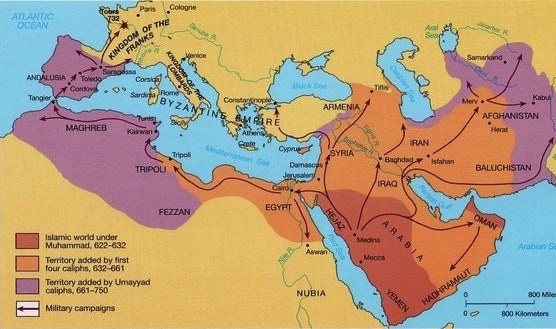türkçe links to original Turkish article by Prof. Dr. Ural Akbulut
(Milliyet Newspaper, 28 June 2019)
Prof. Bloom's PDF click here for the entire story.
BBC History click here for Muslim Spain (711-1492)

The Paper Trail
Paper - one of the most important discoveries that accelerated
knowledge accumulation and diffusion and technology development
by facilitating the sharing of information.
It is known that paper was invented in China but most sources relate
that it spread first from China to Europe and from there to the rest
of the world. However, there is no source that confirms when and
by whom paper was transferred to Europe. Prof. J.M. Bloom's
research proves that the secret of paper went from China to Baghdad
during the Abbasid period, and from there accross the Mediterranean
Sea to the Umayyads in Andalusia, in today's southern Spain.
So paper reached Europe a few hundred years after paper books had
been written in Samarkand, Baghdad, Damascus and Andalusia.
The first paper archeologists found was a map drawn on paper in
China in the period 179-141 B.C., but the first document that revealed
the making of paper was written by Cai Lun in 105 A.D. Cai Lun
was an inventor who was a chief eunuch in the palace in China. He
explained that paper was made from the bark of mulberry trees,
old cloth, hemp remnants and old fish nets. The wet material was
beaten for days with a mallet and the result was paper.
Before paper, writing in China was done on wood, bamboo or white
silk. But wood and bamboo were cumbersome to work with, while
silk was expensive. Consequently, not many books were written
in China until the disovery of paper, after which China had more
books than all of the countries in the West.

The battle between the Abbasids and Chinese at Talas, center.
In the year 751 A.D. the Abbasids won a battle against the Chinese
Emperor Xuanzong's army at the Talas River in today's Kyrgyzstan.
It is known that the Abbasids learned about the secret of paper-making
from two Chinese prisoners and that paper had reached Korea and
Japan 150 years earlier. Paper production by the Abbasids began in
Baghdad and subsequently in Damascus in 800 A.D., in Cairo in 950
A.D., Carthage in 1050 and then in Andalusia.
As of the year 800 A.D., the Abbasids had Syriac and Jewish
translators translate the works of Greek philosophers. The best known
scholars came together in Baghdad and, thanks to paper, thousands of
scientific books were written. In Europe at that time, physics,
chemistry, mathematics and medicine were still undeveloped. Later,
the books of scholars like İbn-i Sina, El Jabir and El Harezmi were
translated into Latin and European languages over the centuries and
used in European universities.
The number of books written by scientists supported by the Abbasids
and the Andalusian Umayyads surpassed the number of books in
China by 1150 A.D. The technique for producing paper passed
from the Andalusian Umayyads to Europe via Spain. Paper began
to be produced in Italy in 1268, in France in 1328, in Poland in 1491,
in England in 1494, in Russia in 1578 and in America in 1690.
The number of scientific books in Europe increased dramatically
after the invention of the printing press. The works of scholars like
W. Gilbert, Galileo, Newton and Lavoisier gave direction to science
the world over. The first science academy was established in
Germany in 1652 and after the first scientific journals began to be
published in Germany and France in 1665, European countries
became the center for science and technology.

Andalusia is on the Iberian peninsula, at far left.

Hiç yorum yok:
Yorum Gönder